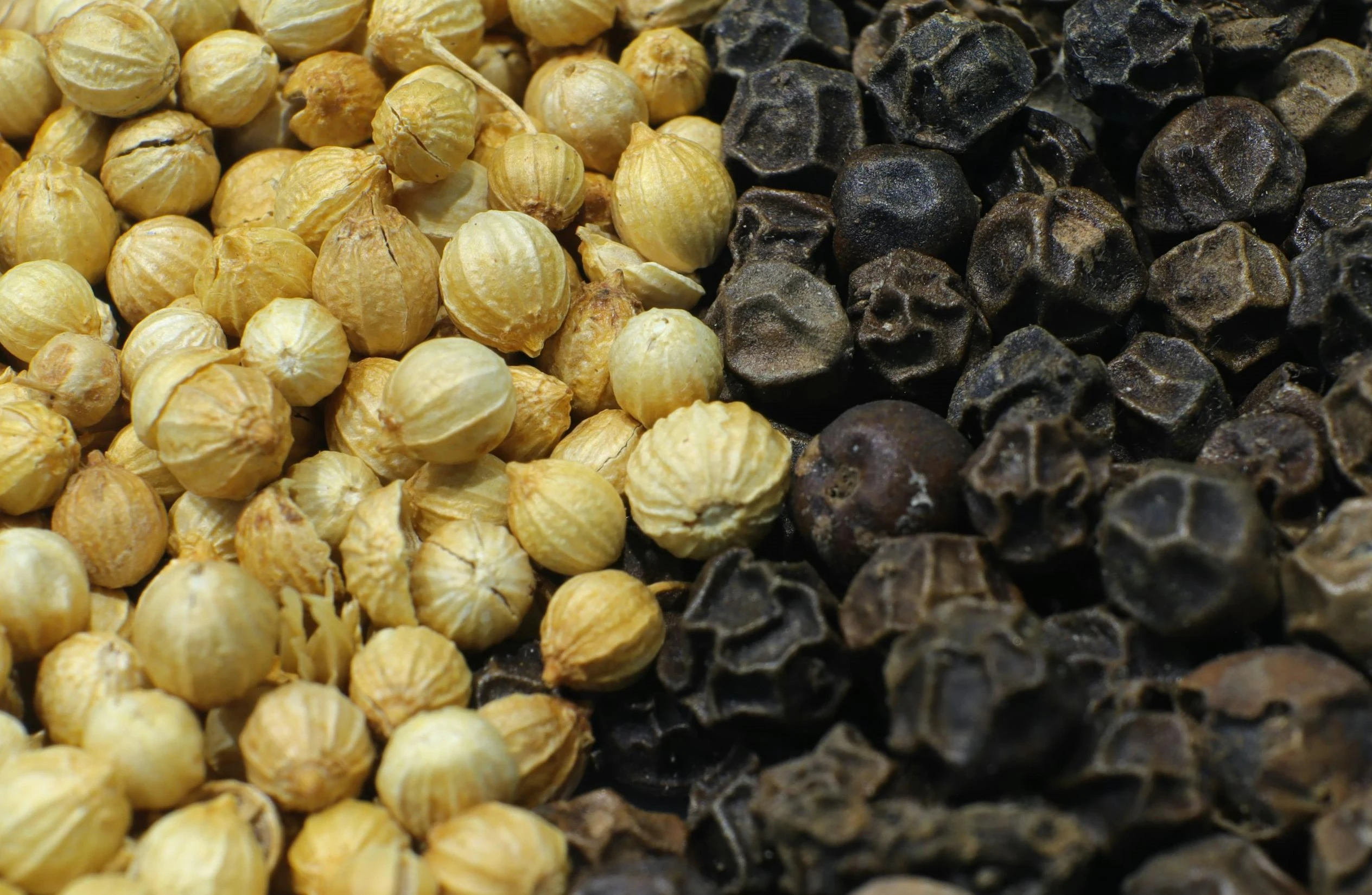A Complete Guide to Indonesian Black & White Pepper for Importers

Pepper: The Undisputed King of Spices from Indonesia
Pepper (Piper nigrum) is the world's most traded spice, and Indonesia is one of its most important and historic producers. The country is particularly famous for its Muntok White Pepper and Lampung Black Pepper, each offering unique characteristics sought after by global buyers. For an importer, understanding the difference between them—and more importantly, how their quality is measured—is fundamental to a successful sourcing strategy.
This guide explains the key distinctions, quality metrics, and sourcing considerations for Indonesian pepper.
Black Pepper vs. White Pepper: A Matter of Processing
It is a common misconception that black and white pepper come from different plants. In reality, they are both the fruit of the Piper nigrum vine; their differences arise entirely from when they are harvested and how they are processed.
- Black Pepper: The pepper berries are harvested while still green and unripe. They are then briefly cooked and sun-dried or machine-dried. The drying process causes the skin to shrink, darken, and form the familiar wrinkled black shell. This process preserves the full spectrum of the berry's flavor compounds, resulting in a complex, pungent, and highly aromatic spice. Lampung Black Pepper is known for its robust heat.
- White Pepper: The berries are allowed to fully ripen on the vine, turning red. After harvesting, they are soaked in water for several days in a process called "retting." This fermentation process softens the outer skin (pericarp), which is then removed, leaving only the inner white seed. The seed is then dried. This results in a flavor that is hotter and more earthy but less complex and aromatic than black pepper. Muntok White Pepper is the world standard for this type.
The Most Important Quality Metric: Density (Grams per Liter)
While factors like moisture and mold are critical, the primary commercial quality indicator for whole peppercorns is density, measured in grams per liter (g/L). A higher density signifies a more mature, solid peppercorn with a greater concentration of piperine (the compound responsible for pungency) and essential oils.
- Lampung Black Pepper: Typically has a density of 500 g/L to 570 g/L. Anything above 550 g/L is considered high quality.
- Muntok White Pepper: Being denser, it has a higher standard. A good quality batch will have a density of 600 g/L, with premium grades reaching 630 g/L or higher.
When you place an order, specifying the required g/L density is one of the most important parts of the contract.
Other Key Sourcing Specifications
- Moisture Content: Must be below 13% to prevent spoilage and ensure stability.
- Admixture (Impurities): For high grades, this should be below 2%.
- HS Code: For both black and white pepper (not crushed or ground), the HS Code is 0904.11.
- Packaging: Typically packed in 25kg or 50kg new, double-layered jute or polypropylene (PP) bags to protect from moisture and contaminants.
Why Partner with PT Sinar Sunda Nusantara for Pepper?
Indonesia's pepper supply chain can be fragmented. A reliable partner is essential to guarantee you receive the quality and density you paid for. We work directly with farmer groups and processors in Lampung and Bangka Island (for Muntok pepper). Our role is to ensure strict quality control, from drying and cleaning to density testing and final packaging.
We provide transparent specifications and can supply both Lampung Black Pepper and Muntok White Pepper at various g/L grades to meet your specific needs, whether for gourmet retail, food service, or industrial food processing.
Secure a consistent supply of a_template_id_high-quality Indonesian pepper. Contact our team today for the latest market prices and to place your order.